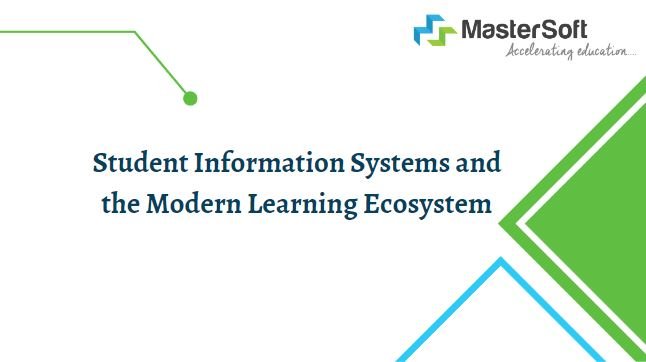In today’s rapidly evolving educational landscape, the use of technology has become paramount in providing a seamless and efficient learning experience for both students and educators. One of the key elements of this digital transformation is the Student Information System (SIS). This blog explores the role of Student Information Systems in the modern learning ecosystem, emphasizing its importance and how it contributes to the overall educational experience.
Understanding the Modern Learning Ecosystem
Before diving into the specifics of Student Management Software, let’s grasp the concept of the modern learning ecosystem. This ecosystem represents the interconnected web of tools, resources, and methods that educators and institutions use to facilitate teaching and learning. It includes not only traditional classrooms but also digital platforms, online resources, assessment tools, and administrative systems.
The Role of Student Information Systems (SIS)
A Student Information System is a comprehensive software application designed to manage student data and streamline administrative tasks within educational institutions, from kindergarten to higher education. The modern learning ecosystem leans heavily on Student Information Systems for several essential functions:
1. Student Data Management: Student Management Software stores and manages student information, including personal details, enrollment status, academic records, and more. This central repository ensures data accuracy and accessibility for teachers, administrators, and students.
2. Academic Records: Student Information Systems helps maintain and update academic records, including grades, attendance, transcripts, and assessment data. This ensures that educators have real-time access to student performance metrics, aiding in data-driven decision-making.
3. Course and Program Management: Educational institutions use Student Information Systems to schedule classes, assign teachers, and manage course registrations. It streamlines program management by enabling students to select courses, track progress, and graduate on time.
4. Communication and Collaboration: Student Information Systems often includes features for communication and collaboration, fostering effective teacher-parent-student communication. It allows sharing of announcements, assignments, and grades, improving overall transparency.
5. Financial Aid and Billing: In higher education, Student Management Software handles financial aspects such as billing, tuition payments, and financial aid distribution, ensuring the smooth financial operation of institutions.
6. Reporting and Analytics: Student Information Systems can generate detailed reports and analytics, which help educators and administrators make informed decisions about curriculum, student performance, and resource allocation.
7. Integration with LMS and Other Tools: Student Management Software often integrate with Learning Management Systems (LMS) and other educational software, ensuring that data flows seamlessly within the modern learning ecosystem.
Challenges and Benefits of Student Information Systems
While Student Information Systems offers numerous benefits, including increased efficiency and data accuracy, there are also challenges that institutions need to address:
1. Data Security: With the increasing amount of sensitive data stored in Student Management Software, ensuring robust data security is crucial to prevent breaches and unauthorized access.
2. Usability: The user-friendliness of Student Information Systems is essential for both educators and students. Complex interfaces can hinder adoption and efficiency.
3. Integration: Seamless integration with other educational tools and platforms is vital for the Student Information Systems to function effectively within the modern learning ecosystem.
Conclusion
In the modern learning ecosystem, Student Management Software play a central role in managing student data, streamlining administrative processes, and improving communication. Their integration with other tools and platforms further enhances the educational experience. As technology continues to evolve, Student Information Systems will continue to adapt and provide valuable solutions to meet the ever-changing needs of educational institutions, students, and educators.




